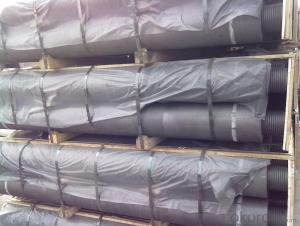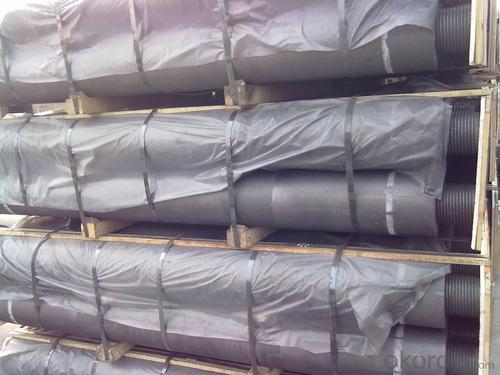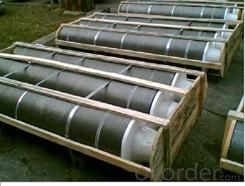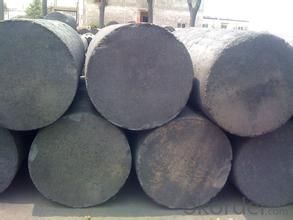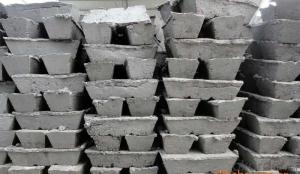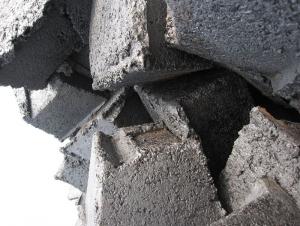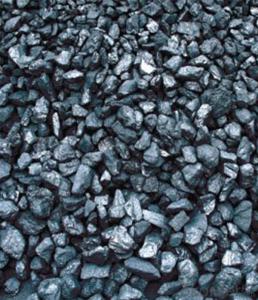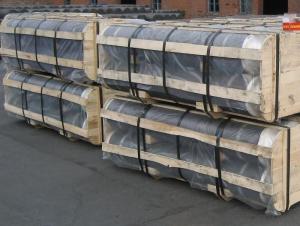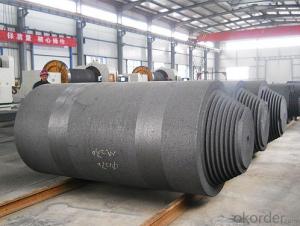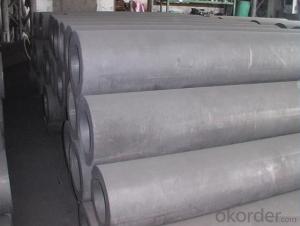Carbon Electrode Φ750~Φ960 G Grade With Good Qulity
- Loading Port:
- Tianjin
- Payment Terms:
- TT or LC
- Min Order Qty:
- 20 m.t.
- Supply Capability:
- 800 m.t./month
OKorder Service Pledge
OKorder Financial Service
You Might Also Like
Product Description
Carbon Electrode is abaked electrode used in submerged arc furnaces for delivering power to the charge mix. Electrode is added to the top of the electrode column cylindrical form. Electrode is essentially a mix of Electrically Calcined Anthracite (ECA) or Calcined Petroleum Coke (CPC) with Coal Tar Pitch and is baked for weeks, it is widly used for ferroally productiong, silicon metal production etc.
Carbon Electrode General Specification:
PARAMETER UNIT GUARANTEE VALUE | ||||||
Ash.( % ) | 4.0 max | 5.0 max | 6.0 max | 7.0 max | 9.0 max | 11.0 max |
V.M (%) | 12.0-15.5 | 12.0-15.5 | 12.0-15.5 | 9.5-13.5 | 11.5-15.5 | 11.5-15.5 |
Compress Strength. (Mpa) | 18.0 min | 17 min | 15.7 min | 19.6 min | 19.6 min | 19.6 min |
Specific Resistance (μΩm) | 65 max | 68 max | 75 max | 80 max | 90 max | 90 max |
Bulk Density (G/CM3) | 1.38 min | 1.38 min | 1.38 min | 1.38 min | 1.38 min | 1.38 min |
Package: in pallets
Picture:
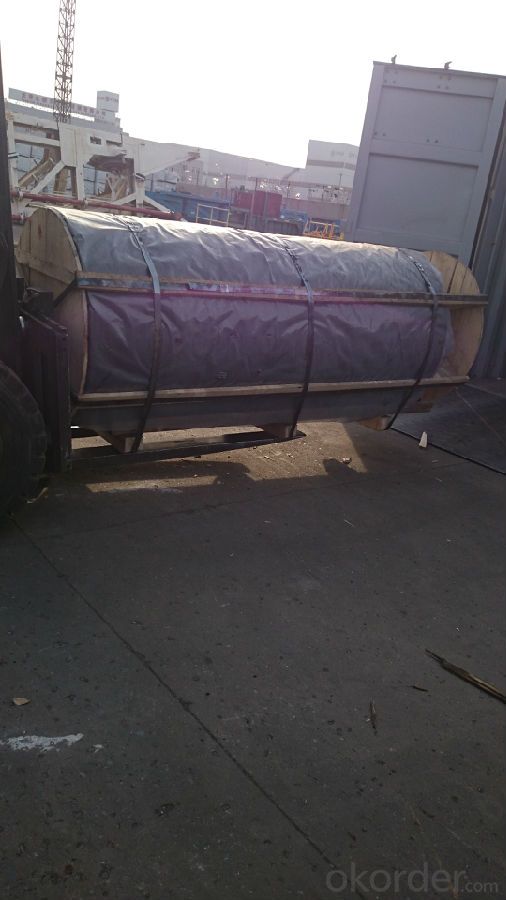
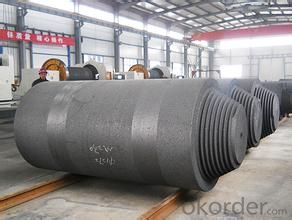
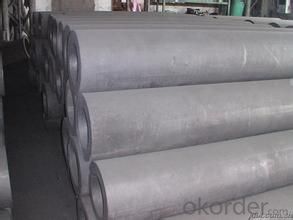
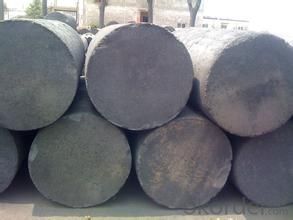
We Also supply all kind of carbon electrode paste and below materials, please contact us if you have any enquiry about it.
Calcined Anthracite
Calcined Petroleum Coke
Coke (Met Coke, Foundry Coke, Semi Coke)
- Q: Something that seems to be used in the locomotive brake system. I haven't seen it, either. Who knows? It's better for the locomotive system to go back. Thank you!!
- The pantograph's bow head has several detachable electrically conductive strips of carbon or powder alloy used to contact the contact wire and power it from above.
- Q: Which is better, 13 and 14 carbon breath tests?
- Two kinds of carbon synthesis conditions are different, the instruments are not the same, so lead to price differences
- Q: How do carbon emissions contribute to extreme weather events?
- Carbon emissions contribute to extreme weather events through the process of climate change. When carbon dioxide and other greenhouse gases are released into the atmosphere, they trap heat from the sun and cause the Earth's average temperature to rise. This phenomenon, known as global warming, is largely driven by human activities such as burning fossil fuels for energy, deforestation, and industrial processes. As the planet warms, it disrupts the delicate balance of weather patterns, leading to an increase in extreme weather events. Here are a few ways carbon emissions contribute to these events: 1. Heatwaves: Increased carbon emissions lead to higher temperatures, which in turn increase the frequency and intensity of heatwaves. This can result in prolonged periods of extreme heat, posing risks to human health, agriculture, and ecosystems. 2. Hurricanes and tropical storms: Warmer ocean temperatures caused by carbon emissions provide more energy to fuel hurricanes and tropical storms. This leads to more intense storms with higher wind speeds and heavier rainfall, resulting in increased destruction and flooding. 3. Droughts: Climate change caused by carbon emissions can alter precipitation patterns, resulting in decreased rainfall and increased droughts in certain regions. These prolonged periods of water scarcity can have severe impacts on agriculture, water supplies, and ecosystems. 4. Heavy rainfall and flooding: Global warming intensifies the water cycle, causing more evaporation and moisture in the atmosphere. This leads to heavier rainfall events when precipitation does occur, increasing the risk of flooding and flash floods. 5. Wildfires: Rising temperatures and drier conditions due to climate change create favorable conditions for wildfires. Increased carbon emissions contribute to the length and severity of fire seasons, causing more extensive and destructive wildfires. It is important to note that while carbon emissions contribute to extreme weather events, they are not the sole cause. Other natural climate variability factors, such as El Niño and La Niña, can also influence extreme weather. However, by reducing carbon emissions and transitioning to cleaner energy sources, we can mitigate the impacts of climate change and help prevent further exacerbation of extreme weather events.
- Q: How does carbon affect the formation of earthquakes?
- The formation of earthquakes is not directly influenced by carbon. The primary cause of earthquakes is the movement of tectonic plates, which are large sections of the Earth's crust that float on a semi-fluid layer underneath. These plates can collide, slide past each other, or move apart, resulting in stress building up along the boundaries between the plates. When this stress becomes too great, it is released as an earthquake. Nevertheless, carbon can indirectly impact the occurrence of earthquakes through its role in the Earth's carbon cycle and its contribution to climate change. Carbon dioxide (CO2) is a greenhouse gas, which is released into the atmosphere through various human activities, including the burning of fossil fuels. This excess CO2 in the atmosphere leads to global warming and climate change. Climate change can have several effects on the Earth's crust, some of which may indirectly influence seismic activity. For instance, global warming can cause the melting of glaciers and polar ice caps, resulting in changes in the distribution of mass on the Earth's surface. This redistribution of mass can cause adjustments in the Earth's crust, leading to increased stress along fault lines and potentially triggering earthquakes. Furthermore, climate change can affect groundwater levels and pore pressure within rocks through changes in precipitation patterns and the hydrological cycle. These alterations in water content can modify the strength and stability of fault lines, making them potentially more susceptible to slipping and causing earthquakes. It is crucial to note that the direct impact of carbon on earthquake formation is minimal compared to primary factors like plate tectonics. However, scientists are conducting ongoing research and investigations to understand the relationship between carbon emissions, climate change, and seismic activity.
- Q: What are the effects of carbon dioxide on ocean acidity?
- Ocean acidity is significantly impacted by carbon dioxide (CO2), resulting in a phenomenon known as ocean acidification. When humans release CO2 into the atmosphere through activities like burning fossil fuels, the oceans absorb it. This absorption triggers chemical reactions that form carbonic acid, which lowers the pH of seawater. The increased concentration of carbonic acid in the oceans disrupts the delicate balance of carbonate ions, which are necessary for the formation of calcium carbonate. Numerous marine organisms, including coral reefs, shellfish, and plankton, rely on calcium carbonate to construct their shells and skeletons. As the ocean becomes more acidic, the concentration of carbonate ions decreases, making it increasingly challenging for these organisms to create and maintain their protective structures. Ocean acidification poses a significant threat to marine ecosystems and biodiversity. Coral reefs, for example, are particularly vulnerable to acidification. As acidity increases, corals struggle to build and maintain their calcium carbonate structures, resulting in bleaching and eventual death of the reefs. The loss of coral reefs has severe consequences for the countless species that depend on them for food, shelter, and reproduction. Additionally, other marine organisms such as shellfish and plankton are also affected by ocean acidification. Shellfish, including oysters, clams, and mussels, rely on calcium carbonate for their shells. As acidity rises, the availability of carbonate ions decreases, making it harder for these organisms to construct their protective shells. This can lead to reduced populations of shellfish, impacting not only the organisms themselves but also the industries and communities that rely on them economically and culturally. Plankton, the foundation of the marine food web, are also susceptible to the effects of increased ocean acidity. Many plankton species possess calcium carbonate structures that provide buoyancy and protection. As acidity rises, these structures weaken, making it more difficult for plankton to survive and reproduce. This disruption in the plankton community can have far-reaching consequences for the entire marine food chain, impacting fish, marine mammals, and ultimately, humans who rely on seafood as a primary source of protein. In conclusion, the impact of carbon dioxide on ocean acidity is significant and concerning. Ocean acidification jeopardizes the health and stability of marine ecosystems, affecting crucial organisms like coral reefs, shellfish, and plankton. Understanding and addressing this issue are crucial for the long-term health of our oceans and the countless species that depend on them.
- Q: How does carbon impact the formation and intensity of hurricanes?
- Carbon, specifically in the form of carbon dioxide, plays a significant role in impacting the formation and intensity of hurricanes. The increase in carbon emissions due to human activities, such as burning fossil fuels, deforestation, and industrial processes, has led to a rise in atmospheric carbon dioxide levels. This, in turn, contributes to the phenomenon known as global warming. Global warming, caused by the greenhouse effect, leads to an increase in sea surface temperatures. Warmer ocean waters provide the necessary energy and moisture for hurricanes to form and intensify. As the atmosphere warms, it can hold more water vapor, which acts as fuel for hurricanes, increasing their potential for stronger and more intense storms. The warming of the atmosphere also alters the atmospheric conditions that influence hurricane formation. It changes the vertical wind shear, which is the difference in wind speed and direction at different altitudes. Low wind shear is favorable for hurricane development, as it allows the storm to organize and strengthen. However, global warming can disrupt this balance and create unfavorable wind shear patterns, inhibiting hurricane development. Furthermore, the increased carbon dioxide levels in the atmosphere contribute to ocean acidification. As carbon dioxide dissolves in seawater, it forms carbonic acid, which lowers the pH of the ocean. Acidic waters can have detrimental effects on marine life, including coral reefs, which act as natural barriers against storm surges during hurricanes. The degradation of these ecosystems weakens their ability to protect coastal communities from the destructive impacts of hurricanes. In summary, carbon emissions and the subsequent increase in carbon dioxide levels have a profound impact on the formation and intensity of hurricanes. The warming of the atmosphere and ocean, along with changes in wind shear patterns, create conditions that favor the development and intensification of hurricanes. Additionally, ocean acidification resulting from excessive carbon dioxide levels weakens natural defenses against storm surges. It is crucial to address the issue of carbon emissions and reduce our carbon footprint to mitigate the potential consequences of climate change and its impact on hurricanes.
- Q: How do humans contribute to carbon emissions?
- Humans contribute to carbon emissions in several ways. One major source of carbon emissions is the burning of fossil fuels for electricity, transportation, and heating. This includes burning coal, oil, and natural gas, which releases carbon dioxide (CO2) into the atmosphere. The use of these fossil fuels is prevalent in our daily lives, from powering our homes and vehicles to manufacturing goods and producing food. Additionally, deforestation, primarily driven by human activities such as agriculture, logging, and urbanization, also contributes to carbon emissions. Trees absorb CO2 and release oxygen, so when they are cut down, the stored carbon is released back into the atmosphere. Moreover, industrial processes, such as cement production and the manufacturing of chemicals, also release substantial amounts of CO2. Lastly, the livestock industry, particularly the production of beef and dairy products, contributes to carbon emissions through methane emissions from livestock and the deforestation associated with expanding grazing areas and growing animal feed. Overall, human activities directly and indirectly contribute to carbon emissions, highlighting the need for collective efforts to mitigate and reduce our impact on the environment.
- Q: How do human activities contribute to carbon emissions?
- Human activities contribute to carbon emissions in several ways. The burning of fossil fuels for electricity, transportation, and industry is one of the main sources of carbon dioxide emissions. When we burn coal, oil, or natural gas, carbon is released into the atmosphere. Additionally, deforestation and land-use changes also contribute to carbon emissions. Trees play a crucial role in absorbing carbon dioxide, so when forests are cleared for agriculture or urbanization, the stored carbon is released back into the atmosphere. Moreover, industrial processes such as cement production and chemical manufacturing also release carbon emissions. Finally, human activities like agriculture and livestock farming can produce methane, a potent greenhouse gas that contributes to global warming. Overall, our reliance on fossil fuels, deforestation, industrial processes, and certain agricultural practices all contribute to carbon emissions, exacerbating the problem of climate change.
- Q: What are the different methods of measuring carbon dioxide levels in the atmosphere?
- Some of the different methods of measuring carbon dioxide levels in the atmosphere include: 1) Ground-based stations: These are fixed monitoring stations that collect air samples and measure carbon dioxide concentrations using gas analyzers. 2) Aircraft measurements: Scientists use aircraft equipped with sensors to sample air at different altitudes and locations to gather data on carbon dioxide levels. 3) Satellite observations: Satellites equipped with remote sensing instruments measure the concentration of carbon dioxide in the atmosphere from space. 4) Oceanic measurements: Researchers collect water samples from various depths in the ocean to analyze carbon dioxide levels and understand its absorption by the oceans. 5) Ice core analysis: By drilling and analyzing ice cores from glaciers and ice sheets, scientists can reconstruct carbon dioxide levels over thousands of years. These methods provide complementary data to understand the distribution and changes in carbon dioxide levels in the atmosphere.
- Q: What does "carbon neutrality" mean?
- Strictly speaking, "carbon neutrality" means that carbon emissions can be "zero", that is, do not emit any greenhouse gases. To achieve carbon neutrality, renewable energy sources that do not produce carbon can be used to meet all energy needs, or offset carbon emissions from fossil fuels, such as investing in carbon emissions reduction projects and so on. But broadly speaking, "carbon neutrality" is sometimes used to describe efforts to reduce greenhouse gas emissions.
Send your message to us
Carbon Electrode Φ750~Φ960 G Grade With Good Qulity
- Loading Port:
- Tianjin
- Payment Terms:
- TT or LC
- Min Order Qty:
- 20 m.t.
- Supply Capability:
- 800 m.t./month
OKorder Service Pledge
OKorder Financial Service
Similar products
Hot products
Hot Searches
